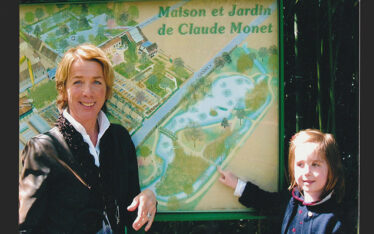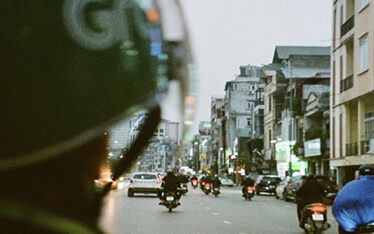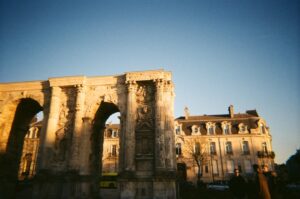
Courtesy of J. Bertoux
My first student apartment was a studio in a bright green building by the canal. I moved in two days after my birthday.
I was driven to Reims by my father. We unloaded the car, shared a drink at the terrace of some restaurant in Erlon, and within a few hours I was back at my new place, faced with five or six cardboard boxes and the realisation that this was it. College. Independence. The beginning of a new chapter in my life—yet despite having never spent more than four consecutive years in one single city, I was never any good at starting over.
Having lived in big cities my whole life, the transition was conceptually difficult. With a population of just under 185,000, about a tenth of that of Montreal, Reims felt tiny. I don’t think I ever adjusted to its size. I think my feelings of entrapment were shared by many of my peers. In my small-college-small-city bubble, tensions, both internal and relational, were blown out of proportion. Reims is not a place to explore anonymity.
________________________
I like to think we all aspired to some form of escapism and that, for that reason, we all appropriated Reims in our own way—then I guess my way was walking. I have always been a fan of the activity. But, as an adult, I was able to do it on my own terms for the first time—especially when sanitary restrictions became more relaxed. I would walk myself to exhaustion when I couldn’t sleep, use walking as a procrastination tool when I didn’t feel like working, or invite a friend to join me when we didn’t have plans.
It was a way to make conflicted or unresolved feelings constructive, by allowing me to clear my mind and build a situated understanding of my temporary environment.
I was also always concerned with integration. The prospect of being a stranger, ignorantly detached from my setting, always bothered me—despite my presence being passing in nature, I needed to build familiarity, to know Reims. Walking, to me, was a way to achieve that—I thought that if I could build memories around specific places, as well as the form of the city itself, I would not become part of it but it would become part of me, somehow.
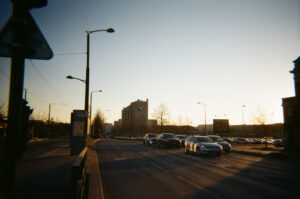
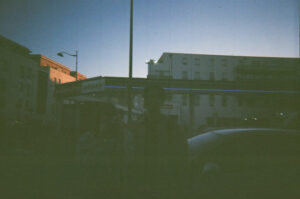
Courtesy of J. Bertoux
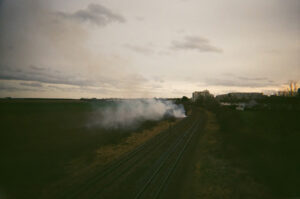
__________________________
I read a piece by Michel de Certeau recently about the act of walking as a form of reading—it was for a class, and it caught my attention because I immediately applied its content to Reims. I read some interesting stories, it seems.
I think I witnessed arson being committed from a bridge near les Épinettes. At first, I thought the two men I saw fiddling with fire near the train tracks were trying to extinguish the flames and continued walking. By the time I had made my way back to the bridge, the whole scene was engulfed in clouds of white smoke. That day, I caught the climax of what I assume to be a layered story—who planned this? Why there? Was it really arson or an accident? Were they ever caught?—but the rest of it will remain untold, at least from my point of view.
________________________
I have so many other stories. I remember that one time I was walking towards the north of the city and found a parking lot exclusively occupied by SNCF trucks, right next to an industrial power plant and seemingly disused wagons parked in the middle of some rails. I couldn’t help but wonder where all these remnants of something I couldn’t quite place came from. Or that summer day when I accidentally walked right onto the route départementale and watched cars follow each other into the sunset. I kept wondering where they were heading and who was inside. Or that time I went to Marché Sainte-Anne on a sunny day in May looking for unsold vegetables to use as part of a non-profit project and ran through narrow, yellow streets after getting yelled at by an aggressive street vendor.
I had favourite urban areas, namely most of Avenue de Laon (along the Neufchâtel-bound streetcar line), Cernay, cours Jean-Baptiste Langlet, Sainte-Anne, Courlancy, and the area around Champagne-Ardenne TGV, between Croix-du-Sud and Bézannes. Each of them offered a different facette of Reims’ surprising visual diversity. In each of them, a piece of its heavily historical, northeastern French identity could be found.
Yet I found that what I enjoyed most was exploring the in-betweenness of the city, which I assume it owes to its size—although, having never lived in other mid-sized cities, I cannot exactly tell whether this is a common occurrence of if Reims is especially bad at transitions.
______________________
Walking in Reims almost doesn’t feel urban at times. The boundaries of the city become easily blurred if you follow a trail long enough. I had never been able to transition into peri-urban space on foot before—and suddenly I could walk down Rue de Cernay right into the countryside, where quiet train tracks sit beside wide fields. Same goes for the canal. At some point, the lampposts become scarcer—I almost fell into a hole one time due to a lack of street lighting. I wouldn’t say I liked these experiences better than the extreme urbanity of a childhood in metropolises, but I enjoyed their unfamiliarity.
My (generational) tendency to overthink and ask myself questions I know I can’t find the answers to may have exhausted me, but I thought—if I can’t truly penetrate Reims, I may as well try to understand it—and if that fails, at least I’ll have done plenty of observation.
Yet transitioning from my tight-knit college environment to the isolated world of my little introspective walks could feel like moving from bubble to bubble—during inevitable lonely periods, I felt as though walks further isolated me.
________________________
Luckily, I had no shortage of friends; they were the highlight of my undergrad experience. Naturally, I shared my favourite activity with them. “Want to go on a walk?” was a common opening line for me. Many of my most treasured memories from my time in Reims are tied to those moments, where I would just spend hours walking my friends through my preferred itineraries or letting them introduce me to their own chosen environments.
Here are three memories, shared with three different friends:
- Walking along the bridge near the centre on a chilly evening in early fall before we had fully subscribed to the practice of wearing coats. That friend and I had made a habit of taking nightly walks during the summer, and the chillier weather was starting to prove challenging. But I remember neither of us minded, and our ritual persevered through the changing seasons. I went walking with him on my last evening in Reims, I thought it was a fitting goodbye.
- Stopping on Place Royale to look up at a swirling flock of birds in October—there’s probably something to be said about migration patterns during that time of the year, but neither one of us knew much about that. The fact that the sun was just beginning to set made the moment even more aesthetically pleasing. I have a video of it somewhere.
- Hiding from the rain during one of many boulangerie That friend and I explored the entire centre-ville area together. We usually stopped in his favourite park, Parc de la Patte d’Oie, and had flan at his favourite bakery. Even though I didn’t particularly like these parts of town, I miss them because heshared them with me.
- Which brings me to a more relational aspect of place-based symbolism. Part of the beauty of loving places conceptuallyis that while such emotional attachments are difficult to replicate from one person to another, they can be communicated—and even transformed or reinterpreted. Sharing a walk with a friend means creating two experiences—and memories—within the same spatial and temporal bounds, which I think may be my favourite part of social walking. Ultimately, living in a small city—and interacting with a very restricted part of town, due to the college bubble and COVID-19 restrictions—means that virtually everyone winds up walking in the same neighbourhoods and stopping at the same landmarks. While work experiences—I held a tutoring job in Neufchâtel for a semester and did volunteer work in Croix-Rouge—frequently brought me outside my usual surroundings, my day-to-day after school walks and group outings usually took place within the Erlon-canal-Saint Rémi-Barbâtre rectangle. I enjoy wondering about this mosaic of individual experiences that both defines personal memories and forms a collective subjectivity. It’s funny and not entirely far-fetched to believe that, ironically, someone I know probably got dumped at the park where I made many favourite memories with friends. More importantly, the more popular places, such as the cathedral, are sure to hold symbolic significance for everyone who went to my college. If we were all to go on a pilgrimage and attempt to re-experience our undergrad urban geographies, we would likely all stop in the same places, albeit probably for different reasons.
- So perhaps we wish we all had different experiences of Reims, but I like to think we were all unwillingly part of the same urban comedy. And although I’ve only been gone for a few months, I’ve noticed that, when I meet someone who went to my college, there’s a shared understanding. We both know the rémois ballet.
About the Article
The pleasure of exploring the community surrounding Reims on foot.


